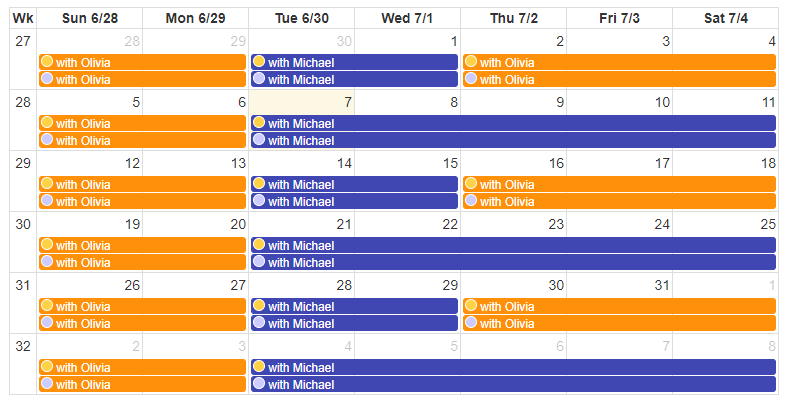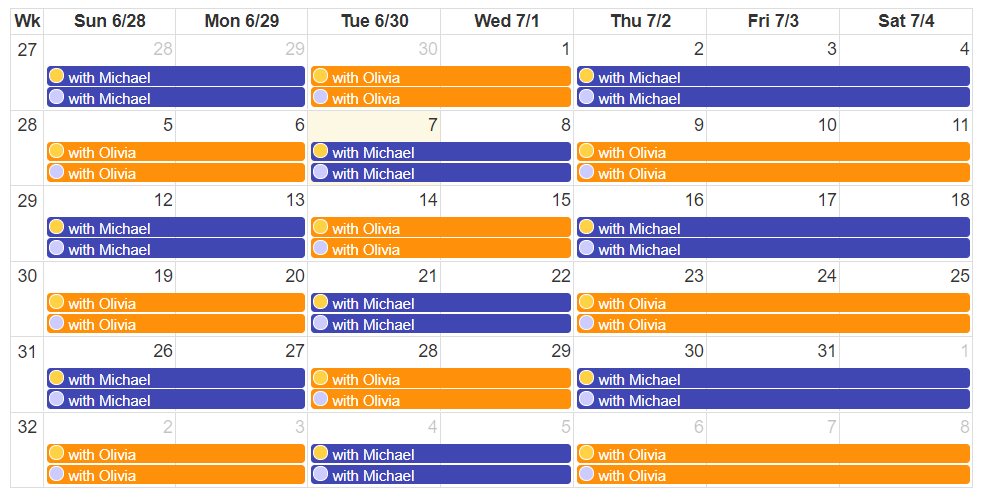Whether your child loves soccer or spends every spare minute learning guitar, nurturing their hobbies and interests is important. Extracurricular activities can help your children make friends, learn new skills, build character and give them a place to burn off all that extra energy. Participation in sports and activities can also open up scholarship opportunities for college and ensure that they grow up to be well-rounded individuals who understand that making time for play and fun is just as important as work and responsibility.
Even without a divorce, getting all of the children to all of the activities can be a challenge. Even two-parent families face the problem of not being able to be in two places at once or whose game to attend when practices or tournaments are being held at the same time for different sports in different places. But when you add in shared custody, alternating weekends and trying to determine who pays for what, it adds another level of difficulty. However, this doesn’t mean that your child won’t get to partake in extracurricular activities just because your logistics are a bit more difficult. Understanding the particular challenges that come with shared custody and learning how to navigate them can give you the tools you need to make it work.
How Shared Custody Can Impact Extracurricular Activities
Going from one family to two creates a lot of challenges. You expect to deal with holidays and summer vacation being a bit different or having to always have two copies of all the notices from school, but one area where parents are often surprised at how much shared custody can affect things is with extracurricular activities. Here are just a few of the factors to consider when your child wants to participate in extracurriculars.
Signing Up for Activities
One of the first hurdles that often comes up with shared custody and extracurricular activities is whether or not to even sign the children up for them. It’s not uncommon for parents to want the children to participate in different activities, which can lead to scheduling conflicts. If you want your child to be in the school musical but the other parent wants them to play hockey, and practices are at the same time, only one person can win. In other cases, one parent wants the child to participate in an activity, but the other doesn’t — often because it will mean spending some of their parenting time at practices and games or just because they don’t believe in children having a busy schedule.
This can be a difficult issue to navigate as it often leaves the children in the middle. If you’re finding that you’re having difficulty coming to an agreement, it can help to sit down and explain the reasons behind your requests to the other parent. Maybe this year, the child does the musical and next year, he plays hockey. Just make sure to keep the children out of the decisions, as they may have preferences that should be considered, but you don’t ever want them to feel like they are having to choose sides.
Drop-Offs and Pickups
Extracurricular schedules are known for being intense, especially if you have more than one child. It’s often a race from the end of one practice to the beginning of the other, and there may not be time for a switch from Mom to Dad’s house in between. If you have a good co-parenting relationship with the other parent, it may be a simple matter of adjusting the visitation schedule on the fly as you work out what’s best for the kids and most convenient for the parents.
However, this can be much more challenging if you are parallel parenting or have difficulty communicating positively with your ex. In these cases, there may not be a lot you can do to make things easier, and you may have to prepare your child to skip a practice that’s being held during the other parent’s time or be willing to give up some of your own parenting time to accommodate the schedule.
Fees and Equipment
While there are many extracurricular programs offered through school and local community programs that are free or low cost, many others can come with hefty participation fees and require specialized expensive equipment. Still others may involve travelling expenses such as hotel rooms for weekend-long tournaments and competitions. This all adds up quickly, and it can be tricky to determine who pays for what. Most parenting agreements don’t detail this by default (although you can have it added), so a lot of it comes down to verbal agreements between the parents, which isn’t always as simple as it sounds.
Family Attendance
One of the best parts about your child participating in extracurricular activities is getting to watch them. However, this isn’t always a simple matter when it comes to two-household families. Maybe you’re fine with sitting with your ex, but you feel awkward around your ex-in-laws. What do you do when your ex brings her new boyfriend? These are all issues that can and do come up, and it can be tense for all the parties involved, including the children.
If you’re still in the process of divorcing, you may want to consider these factors and see if there’s a way to work some of them into your parenting plan so that there is a clear course of action to follow. For example, you can have added into your parenting agreement that you will split all extracurricular fees 50/50 or that one parent will pay for the participation fees while the other will be responsible for equipment. You can also work into the visitation schedule how transportation to and from practices, games and events will be handled.
Keep in mind that while it can be helpful to have all of this spelled out in writing and able to be enforced by the courts if necessary, it’s not an absolute must. If you have a positive co-parenting relationship and are able to make joint decisions and agree to these things on your own, this can work just as well.
Tips for Making It Work
While the shared custody struggle is real when it comes to extracurricular activities, it’s not something that can be overcome with a few strategies, a joint effort and a positive mindset. Here are our three best practices for making it work.
1. Prioritize Communication
Communication is key. This is a major theme when it comes to co-parenting, and for good reason. Open and positive communication can go a long way when it comes to working toward joint solutions and problem-solving, and oftentimes, just giving the other parent the heads up and making a civil request can be all you need. It’s important to respect that the other parent has a schedule, needs and wants to work around as well, and by focusing on what works for both of your houses, you’ll be able to stay united as a team and figure out what’s best.
2. Keep the Schedule Handy
Once you’ve worked out a plan, make sure you put it in writing and where everyone can easily access it. While in a one-household family, this may be as simple as a big wall calendar in the kitchen, but when you’re managing two homes, you need something more adaptable. This is where 2houses comes in.
The calendar feature on the app lets either parent add an event — along with the who, what, where and when details — so everyone knows exactly where the kids should be and who’s doing the pickup and drop-off without having to actually hold all those details in your mind. The messaging feature also lets you give the other parent a quick heads up if something changes or needs to be adjusted.
3. Focus on Civility
It’s easy to treat your ex as…well…an ex, but this won’t get you far. Instead, try focusing on communicating with and treating the other parent like you would a business client that you really want to keep. This will help you switch from frustration and blaming during a disagreement to a focus on being polite and problem solving. It’s also worth noting that some time there may not be a way to agree or a solution to be had, and if your child has to miss a game or can’t participate in an activity one semester, it won’t be the end of the world even if they may think so.
What to do about extracurricular activities is just one of many issues that can come up when you have shared custody. Learn more about what to expect as you go from one family to two and how you can move toward positive co-parenting in the 2houses family blog.




